Style & Substance
Billie Muraben looks back at familiar and new spaces, smells and tastes of Istanbul
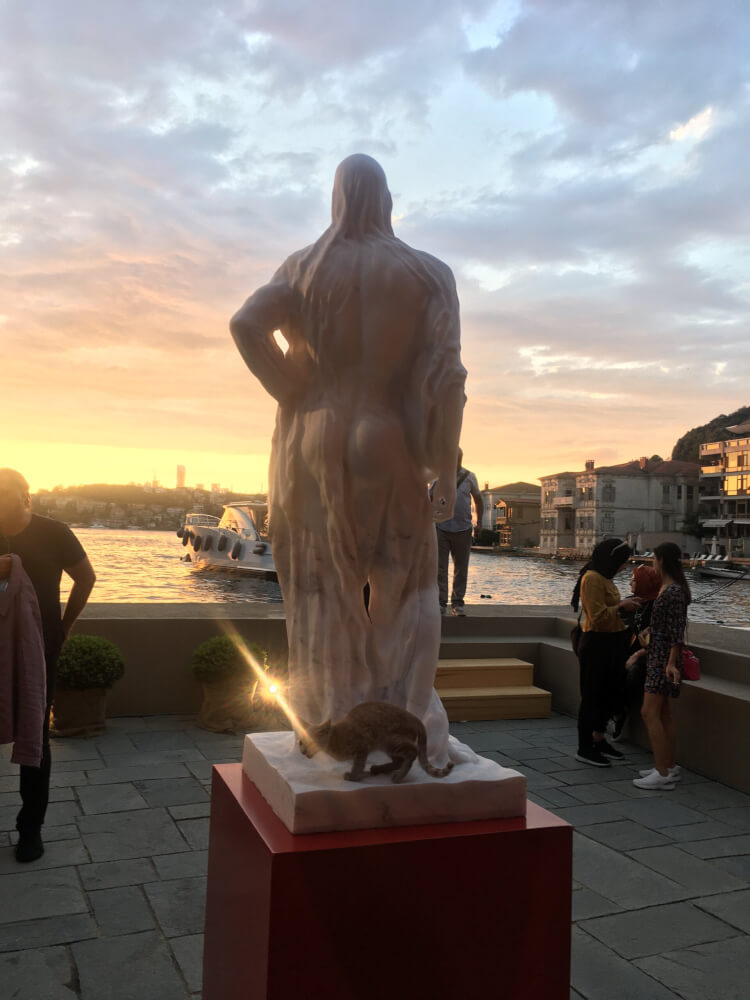
ALL PHOTOS BY BILLIE MURABEN
Walking up the hill from Pera onto Istiklal Avenue, the hum of bustling crowds reverberates like cicada song down the narrow streets, the glow of back-lit signage, neons, and LED banners lighting up the opening to one of Istanbul’s most renowned thoroughfares.
The exhibition '90s Onstage' at SALT Beyoğlu, a gallery and research centre in a 19th century apartment building on Isitklal Avenue, opens with a raised yellow boulevard that welcomes viewers into the space. Along a corridor of works of art, theatre and music set on or around the avenue, Istiklal is shown as a site for expressing and testing the limits of personal and collective freedoms, experimentation and collectivity.
Largely pedestrianised, except for a historic tram, municipal vehicles, and rogue drivers, Istiklal, which translates as ‘independence’ was named to commemorate Turkey’s War of Independence after the defeat of the Ottoman Empire during World War I. The avenue has long held significance, running from the Mediaeval Genoese quarter up to Taksim Square — embassy buildings, churches, mosques, synagogues and schools sitting side-by-side with theatres, libraries, cafes, galleries, shops, clubs and bars — Istiklal has witnessed or been the site of various moments of transformation in the life of the city.
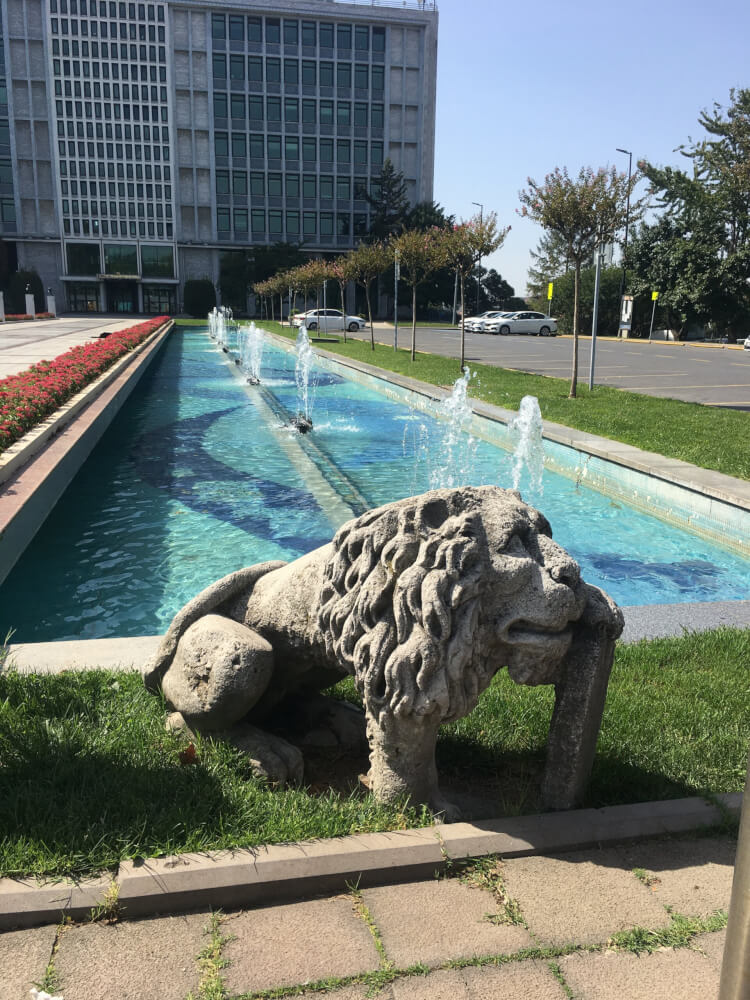
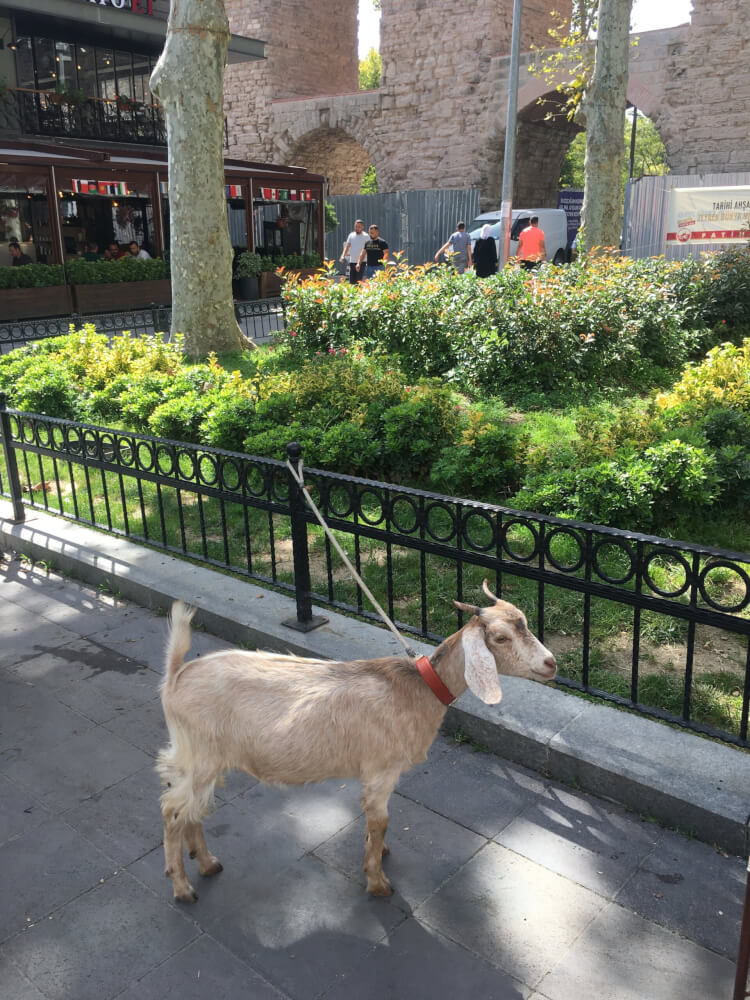
On that warm September evening crowds of people zig-zagged between each other, offerings of baklava, chai, and perfume were projected out into the atmosphere, prospective customers were ushered into restaurants, and ice cream was spun high on long, curved rods, glimmering and dropping into cones, and offered into the hands of the cream conductor’s transfixed audience.
Walking down into Galata, past shops selling musical instruments, kiosks piled high with fruit for freshly squeezed juice, and cafes offering roadside seats for taking in the action, we curved off into a grand lobby and waited our turn to cram into a small metal lift, from which we descended onto the roof of one of the many meyhane (or ‘house of wine’) that populate the area. The restaurant looked out on the Golden Horn, and over the Bosphorus onto Anatolia; with clinking glasses of raki and plates of mezze criss-crossing over white tablecloths, interrupting and transforming conversation, the lights of the sprawling city twinkled in the distance, ready to envelop us in their glow.
The newest edition of the Istanbul Biennial, curated by Ute Meta Bauer, Amar Kanwar and David Teh — without a title and bound by the uniting theme of compost — spread out across the city in a series of venues, including two hamams, a bookbinding studio, a shop, an old school building and a subway tunnel.
By opening out into Istanbul, it encouraged people to move beyond the usual circuit of museums and into the history and life of the city. Contemporary Istanbul also took on a new venue, Tersane, an Ottoman shipyard on the Golden Horn that had been abandoned for some time before the current redevelopment, which aims to make the area a popular destination for culture and commerce.
At Tersane, Contemporary Istanbul marked settling into its new long-term home by spreading out over multiple buildings and across the waterside courtyard, with installations on piers and in the water, as well as the indoor exhibition. Sanatorium gallery showed a works by a group of artists including Erol Eskici’s mixed media works depicting the movements of exercising men, and Merve Sendil’s woven text piece, which reads “The Things Behind Our Darkness”; at Galerist Elif Uras exhibited a series of ceramic vessels that echo and challenge the practice’s connotations as a ‘feminine’ method, and Dirimart celebrated 20 years as an Istanbul institution with a multi-booth installation, featuring works from Shirin Neshat, Franz Ackermann and Anselm Reyle. At Roya Khadjavi Projects, the gallery’s roster of young Iranian artists offered a range of approaches to working with paint, the Safarini Sisters and Ala Dehghan presenting contrasting, but complimentary impressions of dramatic, surreal compositions. And at Viable, the art platform and project space transformed its booth into an inviting installation, complete with a white fluffy bench and walls, with paintings, photographs and objects seeming to protrude out from the body of a sleeping animal. On the Golden Horn, a giant neon sign floated on the water, the lights set up to read ‘WATER’, an installation and monument to the element by Martin Creed, which floated up and down the estuary during Contemporary Istanbul’s convivial opening party. As the sun set, Istanbul’s wide skies turned candy floss pink, a soft smog mimicking the effect of rose-tinted glasses.
The elements of discovery that rose from exploring Tersane, and the biennial locations, were an invigorating counterpoint to my desire to revisit, and embed myself in familiar spaces, smells and tastes of the city. I had not been to Istanbul since September 2019 due to the pandemic, and had previously visited at least once a year since birth, to see family and my Baba’s school friends who had remained there. There was a sense of grief in returning to the city, but once I was there being flung forward by its energy, that feeling dissipated and left in its place an energising sense of potential.
The first space I visited was the Çinili Hamam, a 16th century building that has reopened after over a decade of restoration work. Inside the hamam, newly installed wooden structures, marble, and gold metalwork, intermingle with the blue tiles that are the namesake of the hamam — many of which were sold and scattered across Europe, and now belong to private or museum collections. The works exhibited at Çinili were predominately sound-based, making use of the acoustics of the domed roofs — each cut out with constellations of stars, dappling light over the marble seats and alcoves — adding to the already rich atmosphere of the space. Taloi Halvini showed a multi-channel piece, Answer to the Call, a collaboration with musician Ben Hakalitz which features recordings from a residency on a sea vessel and ocean travelling chants from Buka Island; Renato Leotta’s piece, Posidonia — Concertino per il mare, is inspired by the artist’s pursuit of an aquatic plant in the Mediterranean Sea.
The Çinili Hamam is in the Zeyrek neighbourhood of Fatih, part of old Constantinople, and above the historic area of Sultanahmet. Between the Grand Bazaar and the Blue Mosque is Barin Han, a calligraphy and bookbinding studio, and another location of this year’s Biennial. The studio opened up each floor of its building — except for a working bookbinding studio, and the master calligrapher’s office, which has been preserved in his memory — and exhibited works by a long list of practitioners, including Açik Radyo, Crip Magazine, Green Papaya Art Projects and KONDA. From Barin Han, we walked down towards Eminönü, past mosques, over historic cisterns, and along steep side streets busy with construction work and decorated shops selling wedding dresses and gold-trimmed furniture. Towards the bottom of the hill, we reached the outer areas of the Mısır Çarşısı (Egyptian Bazaar) or spice bazaar, where narrow streets fill with traders selling hamam towels, paper bags, plastic home goods, Turkish coffee, and soaps, intermingled with cafes offering sütlaç (rice pudding), kofteci (meatball maker), and chai.
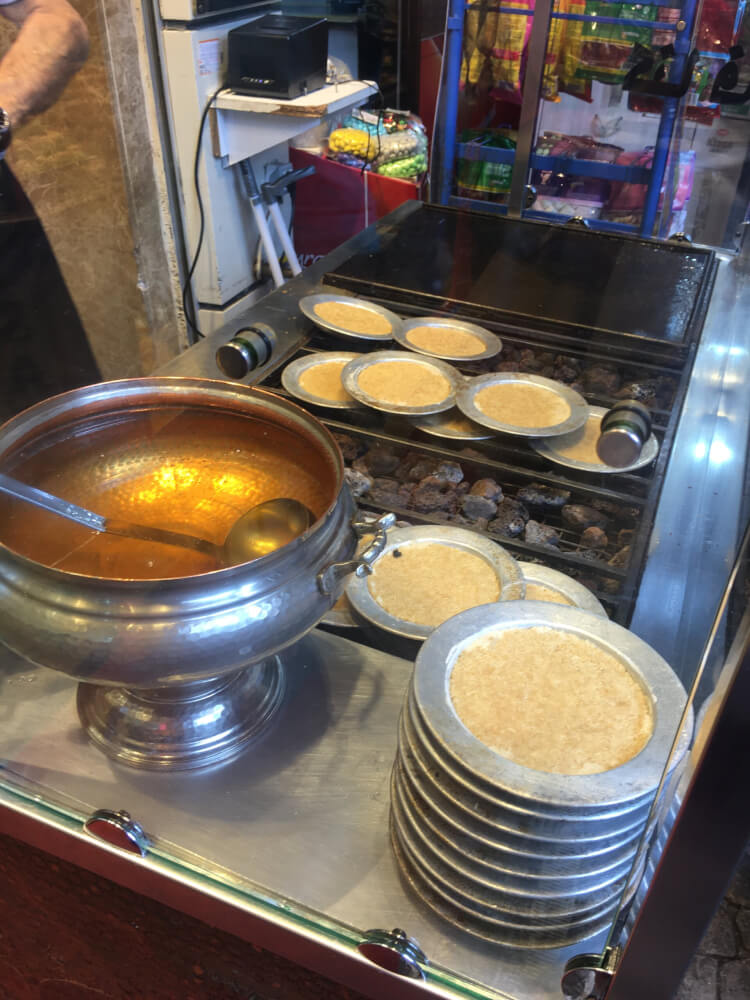
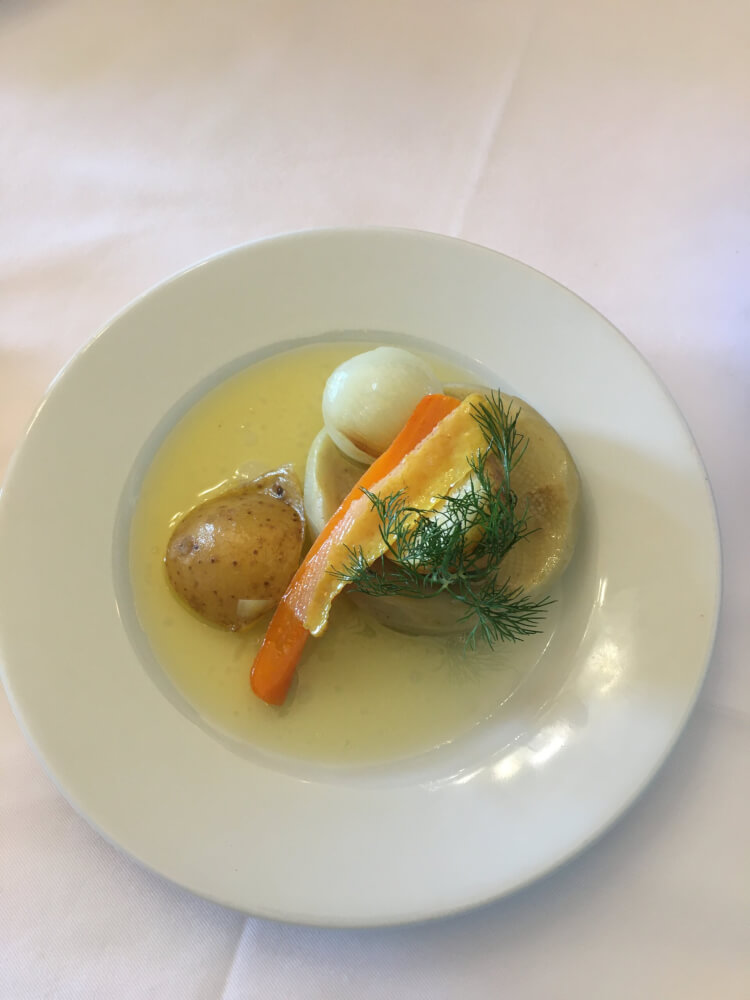
The Pera Museum, across the road from our hotel hosted a series of works from the Biennial on its upper floors, intermingled with its permanent collection of Anatolian Weights and Measures, paintings and ceramics. On the Cihangir side of Istiklal, and at the top of the avenue on Taksim Square, a series of unlikely locations had been converted into exhibition spaces — including the Yaklaşım subway tunnel, and the Central Greek High School for Girls, which has been maintained as a sort-of museum to the school since it closed in 1999. At the high school, Marco Scotini and Can Altay installed Disobedience Archive, which shows an edit of decades worth of footage of protests and creative resistance, displayed on repurposed school furniture and creative sets and settings within the frame of the elaborate architecture of the building.
Down the hill from the school at Büyükdere35, an exhibition and workshop space, Cooking Sections had installed Wallowland, a research project tracing the interactions of Istanbul’s water buffalo with wetland ecologies around the city, which are under threat of disappearance. They founded a water buffalo festival, and converted Büyükdere35 into a muhallebici, a kaymak and sütlaç pudding shop, where they served food among displays of metabolic surveys and sound pieces. Elsewhere in the area, Performistanbul Live Art Research Space (PCSAA) showed an archive display, In Time / On Ground, a collaboration between Women’s Library and Information Centre, Çağla Özbek and Merve Elveren, and Dictionary of Sensitive Sounds, by Elif Öner & Evrim Kavcar, a polyphonic, multiform, participatory art project that traces the subjective, social and cultural layers of sound. At SAHA Studio, an organisation supporting artist’s work in Cihangir, Ahmet Öğüt and The Silent University arranged an Orientation Program, with a series of online lectures and on-site events, focused on acting beyond the limits of national borders. Close to the studio is Kahve 6, a cafe that appears unassuming from the street, and has a raised garden at the back with a small pond, pebbled floor and plants hanging from high wooden frames and growing from the ground among a careful choreography of small tables and built-in benches. The garden has the feeling of being far from the city, a calm haven offering a mix of internationally popular dishes and traditional Turkish breakfasts and lunch plates.
We had çılbır, poached eggs with yoghurt and chilli butter, served over spinach with a flatbread at the base of the bowl, soaking up layers of flavour, allowing us to wipe the bowl clean.
After breakfast, we walked up through Cihangir to Demeti, a restaurant owned by one of my Baba’s close friends. Entering through a door that seems more like that for an apartment building, we went up the red velvet stairs and into the restaurant, which was setting up for lunch and yet to open for the day. Over Coca-Cola from glass bottles, we sat on the terrace and caught up with the owners, looking out over the open secret of a view; rolling hills dropping into the water, the spread of Istanbul continuing over the horizon.
We walked up to Istiklal via backstreets filled with pickle shops, vegetable traders, record shops and antiques dealers, and returned to SALT Beyoğlu for a second viewing to sit with the film works at ‘90s Onstage’. We had been invited to an artist’s tour of Taner Ceylon’s exhibition ‘Row gently let not the moonlight wake’ at a private mansion on the Anatolian side that evening, which would be followed by a dinner of grilled fish and mezze at a waterfront restaurant. The boat was leaving from Beşiktaş pier in a few hours, and SALT was our last stop before returning to the hotel to change for the evening. At the back of the exhibition space, behind a thick red curtain, there was an installation of works by Ceylan.
Monte Carlo Stili (or The Monte Carlo Style) is the record of a ‘happening’ that Ceylan performed in the 1990s; an exhibition and party at his studio that was advertised through a series of posters for a whole other event. Ceylan promised “distinguished guests” an evening hosted by Steve Maurice, a yacht party that would go on until dawn, with engraved metal invitations, fine jewellery sponsors and champagne. When guests arrived, it was in fact Ceylan’s studio, converted into an exhibition space with the artist and two friends dressed up as ‘Monte Carlo style’ hosts. They offered out glasses of champagne, and kept the rouse going through the vain chatter of yachts and big money, making a show of the messy, conflicting ideals and overlaps between the structures of the art world and private wealth.
Text: Billie Muraben

